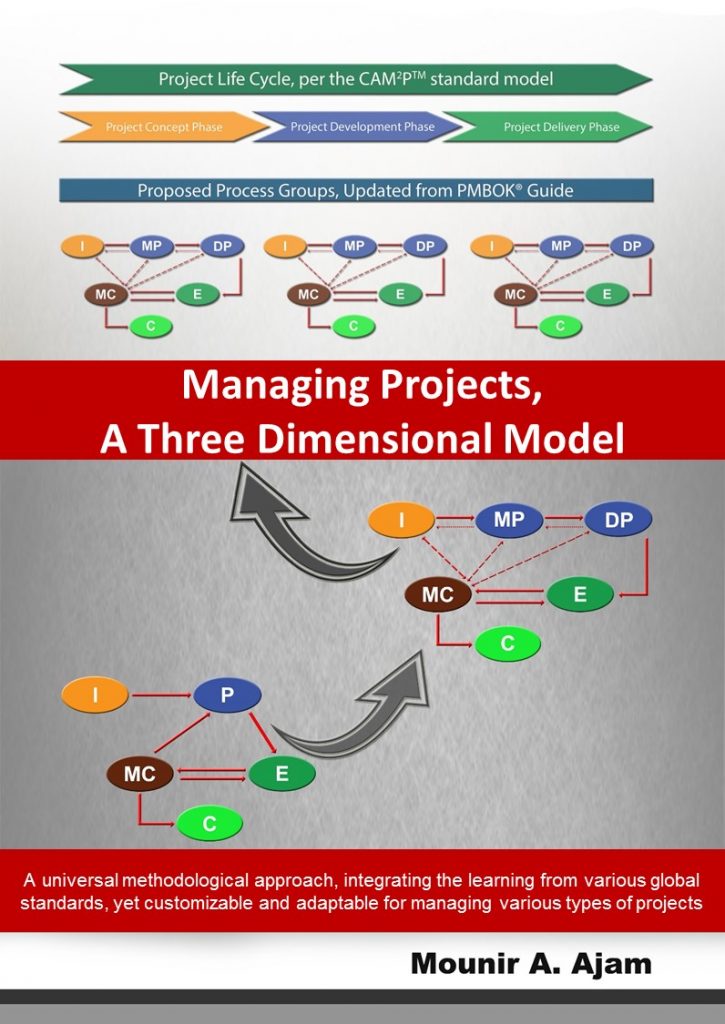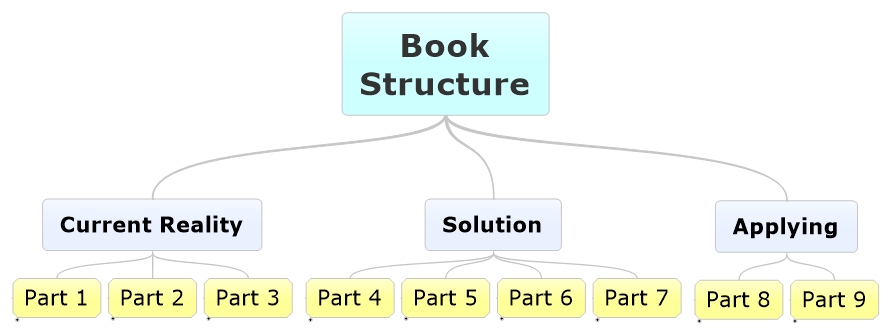I have been working on two books:
- The first was about the PMBOK Guide (and ISO 21500) but mostly about how to apply these guides in the real world, and
- The second book is a re-write of a book we self-published two years ago (Redefining the Basics of Project Management), which focus on The Customizable and Adaptable Methodology for Managing Projects™.
In discussions with a publisher, we have considered merging these two books to deliver a well rounded book. Below, is the structure and high-level content of this book. What do you think?
The Book Title
 To be decided but one option is Managing Projects, a Three Dimensional Model. This book will expand on what we introduced via a past blog article.
To be decided but one option is Managing Projects, a Three Dimensional Model. This book will expand on what we introduced via a past blog article.
The Book Structure
The following image, PBS, presents the high-level product breakdown structure for the book.
 Current Reality
Current Reality
The current reality is about setting the scene and consists of three parts:
- Part 1 presents the global project management scene with a focus on project management professional associations, gaps and opportunities, and various definitions that are necessary for the book.
- Part 2 is dedicated to project management standards, such as ISO 21500 and the PMBOK® Guide as two standard documents that are highly popular in the project management community. These two guides share a similar structure, in particular, the process groups, processes, and functions, which are the component of an essential dimension in the presented solution. This part also include a chapter about IPMA and GPM Global.
- Part 3 highlights the challenges in the current practice of project management, especially in relation to the leading standard documents. This part clarifies the common confusion between process groups and project phases – the project life cycle also covers some of the gaps and inconsistencies in these popular standards.
Solution
The presented solution consists of four parts and it is the core of the book, the methodological approach that we advocate.
- Part 4 presents and overview of the proposed solution, which includes topics such as the need to have a strategic perspective, organizational project management, and present the model and the rationale behind it.
- Part 5 presents the details of the first dimension, of the three-dimensional model. This dimension is about the project life cycle with the phases and stages. There is a chapter for each project stage.
- Part 6 highlights the second dimension, which is the project management processes and functions. This part includes the alignment and link to ISO 21500 and PMBOK® Guide, along with a new perspective on project planning and the need to split management planning from detailed (product’s oriented) planning. The author also proposes numerous processes that are not in the standards.
- Part 7 is specific to the third dimensions and includes some of the topics that must overlay the first two dimensions. These include topics such as benefits management, process success, competence, and sustainability.
Applying
The last section of the book is about applying the methodological approach and consists of two parts.
- Part 8 is titled Managing per the Three Dimensions since it elaborates and offers topics that help the practitioners visualize the link between the dimensions. These include the following concepts: approvals, estimating, control, change and risk management, and the people aspects, teams and stakeholders.
- Part 9 is also applying the CAMMP™ concepts in the real world with chapters covering project classifications, project owner versus service provider, customizing the model to industries or organizations, adapting the model to functions or project types, potential pitfalls, and a few simulated samples.
What do you think? Is there something here to delete or did we miss anything? We want to hear from you. Thanks
[contact-form][contact-field label=’Name’ type=’name’ required=’1’/][contact-field label=’Email’ type=’email’/][contact-field label=’Website’ type=’url’/][contact-field label=’Comment’ type=’textarea’ required=’1’/][/contact-form]
